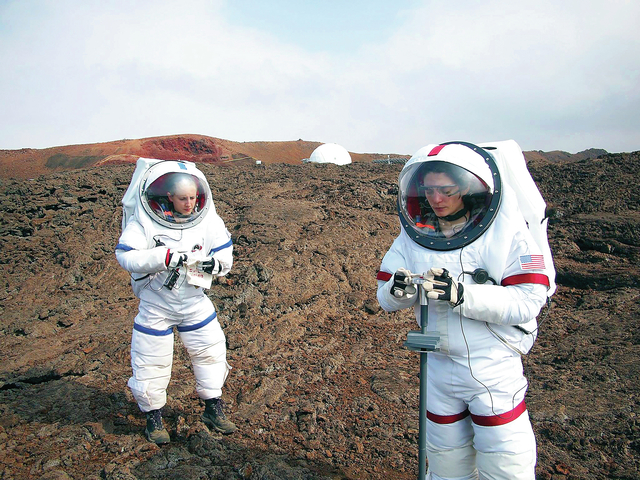HONOLULU — Six carefully selected scientists will spend the next eight months living inside a man-made dome on a remote Hawaii volcano as part of a human-behavior study that could help NASA as it draws up plans for sending astronauts
HONOLULU — Six carefully selected scientists will spend the next eight months living inside a man-made dome on a remote Hawaii volcano as part of a human-behavior study that could help NASA as it draws up plans for sending astronauts on long missions to Mars.
The four men and two women were scheduled to move into their new simulated space home Thursday afternoon on Mauna Loa, settling into the vinyl-covered shelter of 1,200 square feet, or about the size of a small, two-bedroom home.
They will have no physical contact with people in the outside world and will work with a 20-minute delay in communications with their support crew, or the time it would take for an email to reach Earth from Mars.
The NASA-funded project will study the psychological difficulties associated with living in isolated and confined conditions for an extended period.
“We’re hoping to figure out how best to select individual astronauts, how to compose a crew and how to support that crew on long-duration space missions,” said principal investigator Kim Binsted, a University of Hawaii science professor.
NASA hopes to send humans to an asteroid in the 2020s and Mars by the 2030s.
The team members on the dome project include engineers, a computer scientist, a doctoral candidate and a biomedical expert. They were selected from 700 applicants who were subjected to personality tests, background checks and extensive interviews.
The University of Hawaii operates the dome, called Hawaii Space Exploration Analog and Simulation, or HI-SEAS, and NASA has dedicated over $2 million to the various studies at the facility.
Scientists previously lived in the dome for two other long-term NASA-funded stays to study food requirements and crew cohesion.
There are a number of other Mars simulation projects around the world, but one of the chief advantages of the one in Hawaii is the rugged, Mars-like landscape, on a rocky, red plain below the summit of the world’s largest active volcano.



